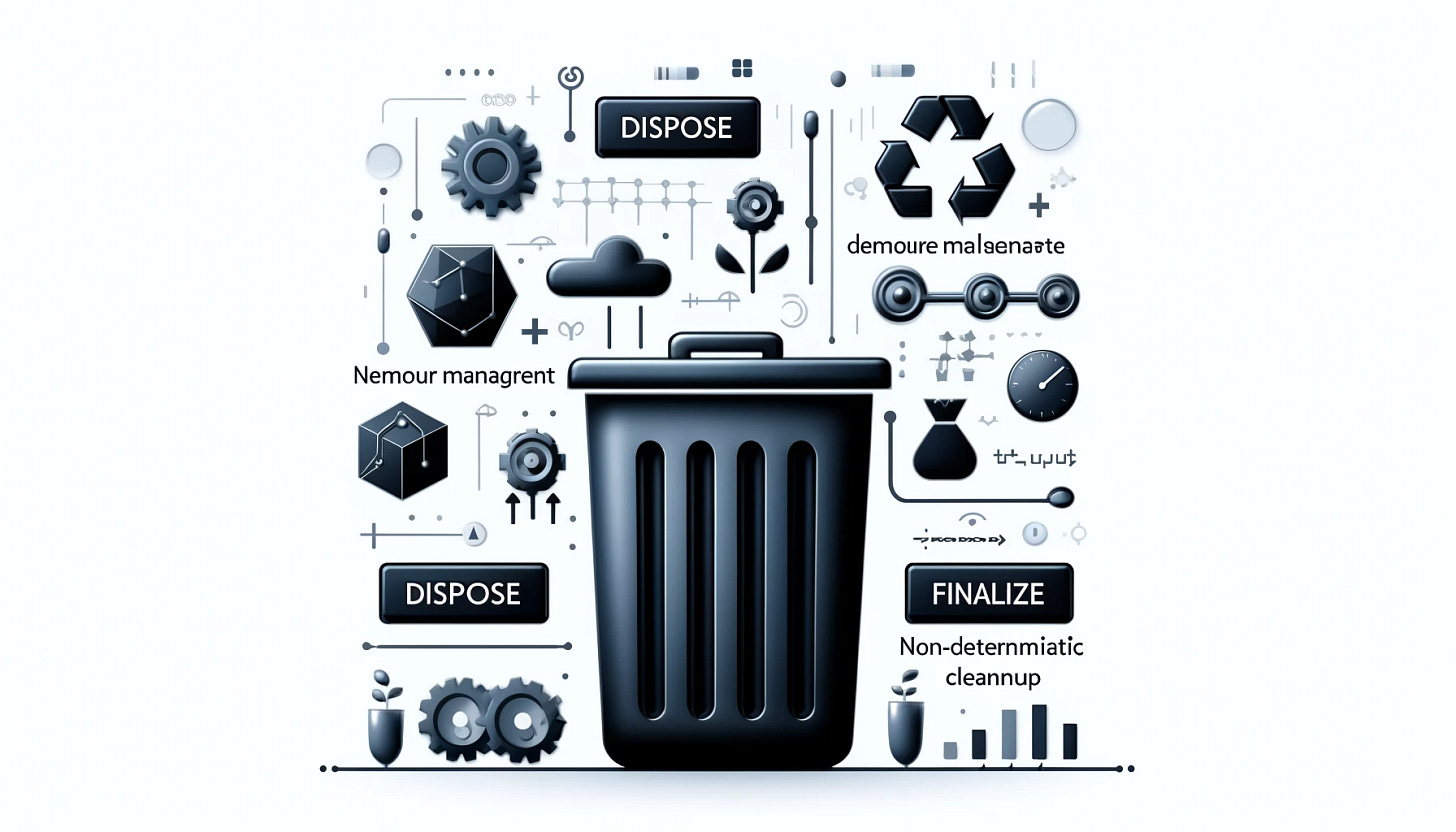Dispose or Finalize: Which One Fits Your .NET Core Application?
A Developer’s Guide to Choosing the Right Resource Management Approach
In .NET Core, managing resources effectively is crucial for building robust, performant, and scalable applications. Two mechanisms, Dispose and Finalize, help in releasing unmanaged resources. However, understanding when and where to use each can be confusing for developers. In this blog, we’ll clarify the differences between Dispose and Finalize, their roles in resource management, and how to determine the best fit for your .NET Core application.
The Basics of Resource Management in .NET
.NET Core applications rely on the Garbage Collector (GC) for automatic memory management. However, the GC primarily handles managed resources (objects within the .NET environment). For unmanaged resources like file handles, network sockets, or database connections, developers must explicitly release them to avoid resource leaks.
What is Dispose?
The Dispose method is part of the IDisposable interface. It allows developers to manually release unmanaged resources when they are no longer needed.
Key Characteristics:
Deterministic: Dispose is called explicitly, ensuring resources are released immediately.
Manual Control: The developer decides when to free resources.
Pattern-Based: Implements the IDisposable pattern.
Implementing Dispose
To use Dispose, your class must implement the IDisposable interface.
Example: Releasing File Resources
using System;
using System.IO;
public class FileManager : IDisposable
{
private FileStream _fileStream;
public FileManager(string filePath)
{
_fileStream = new FileStream(filePath, FileMode.OpenOrCreate);
}
public void Write(string content)
{
var writer = new StreamWriter(_fileStream);
writer.WriteLine(content);
writer.Flush();
}
public void Dispose()
{
_fileStream?.Dispose();
Console.WriteLine("FileStream resources released.");
}
}
// Usage
using (var fileManager = new FileManager("example.txt"))
{
fileManager.Write("Hello, World!");
}
Advantages of Dispose
Ensures immediate release of resources.
Works seamlessly with the
usingstatement for safer and cleaner code.Reduces dependency on the Garbage Collector’s timing.
👋 Become 1% better at .NET Full Stack development every day.
👆 https://dotnet-fullstack-dev.blogspot.com/
♻ Restack it Vibe matches, help others to get it
What is Finalize?
The Finalize method is called by the Garbage Collector to clean up unmanaged resources before the object is removed from memory.
Key Characteristics:
Non-Deterministic: Finalize is called automatically by the GC, so you don’t know exactly when it will execute.
Less Control: Developers cannot explicitly invoke Finalize; it is called during the object's finalization phase.
Performance Overhead: Objects with a Finalize method require additional processing by the GC.
Implementing Finalize
To use Finalize, override the Object.Finalize method in your class. However, this is rarely recommended in modern .NET development.
Example:
using System;
public class FileManager
{
private IntPtr unmanagedResource;
public FileManager()
{
unmanagedResource = /* Allocate unmanaged resource */;
}
~FileManager()
{
// Cleanup unmanaged resource
Console.WriteLine("Finalize called to release unmanaged resources.");
}
}
Why Finalize is Rarely Used
Adds significant overhead to garbage collection.
Difficult to control when resources are released.
Dispose is preferred for deterministic resource cleanup.
Dispose vs. Finalize: Key Differences
Combining Dispose and Finalize
In some cases, you may need both Dispose and Finalize, especially when dealing with unmanaged resources. To implement both, follow the Dispose Pattern.
Dispose Pattern Implementation
using System;
public class ResourceHandler : IDisposable
{
private IntPtr unmanagedResource;
private bool _disposed = false;
public ResourceHandler()
{
unmanagedResource = /* Allocate unmanaged resource */;
}
public void Dispose()
{
Dispose(true);
GC.SuppressFinalize(this);
}
protected virtual void Dispose(bool disposing)
{
if (!_disposed)
{
if (disposing)
{
// Dispose managed resources
}
// Release unmanaged resources
unmanagedResource = IntPtr.Zero;
_disposed = true;
}
}
~ResourceHandler()
{
Dispose(false);
}
}
When to Use Dispose or Finalize
Use Dispose When:
You have managed resources like file streams, database connections, or sockets.
You want deterministic cleanup using the
usingstatement.
Use Finalize When:
You are dealing with unmanaged resources that cannot be wrapped in managed objects.
You cannot implement Dispose due to external constraints.
Prefer Dispose Over Finalize
Finalize is considered a fallback mechanism and should be avoided unless absolutely necessary. Dispose is the recommended approach in most scenarios.
Best Practices for Resource Management
Always Use the
usingStatement: Theusingstatement ensures resources are disposed of correctly, even in case of exceptions.using (var resource = new ResourceHandler()) { // Work with the resource }Avoid Finalize Unless Necessary: Implement Finalize only when dealing with unmanaged resources that cannot be managed by the
Disposemethod.Suppress Finalize When Using Dispose: Use
GC.SuppressFinalize(this)in the Dispose method to prevent redundant finalization.Monitor Resource Usage: Use tools like dotMemory or PerfView to analyze memory usage and identify leaks.
Conclusion
Choosing between Dispose and Finalize depends on your application’s requirements:
Use Dispose for most scenarios where deterministic cleanup is essential.
Use Finalize sparingly for unmanaged resources when Dispose is not an option.
By following best practices and understanding the nuances of these mechanisms, you can build efficient and robust .NET Core applications.
Have you faced challenges with Dispose or Finalize? Share your experiences in the comments below!



